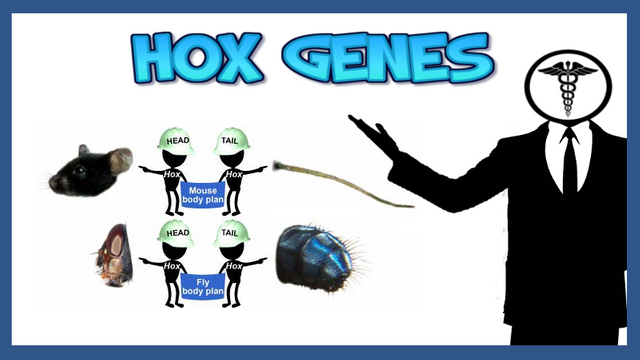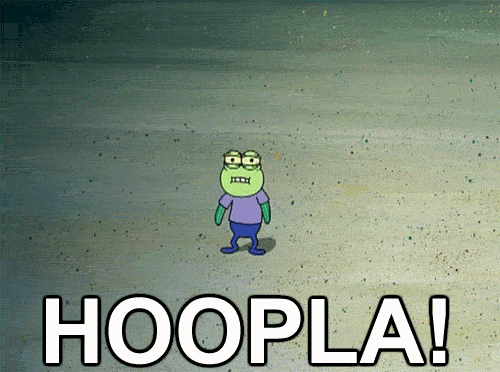Tuesdays w/ Trismegistuz | Hox Genes: How to Make Legs Grow From Your Head!?
Hey guys, its Tris! And today I'm back with a more in-depth look at some of the most mindblowing science being studied to date. Have you ever wondered why your arms are where they are? Why you only have two and not 4? Why don't your arms grow from your head and not your torso?
Hox Genes
In this segment, il be answering just that by looking into the genes in our bodies which are responsible for maintaining the body plan in all vertebrates. Of course, I am talking about Hox Genes, one of the most important discoveries in biology and one of the most important contributors to the evolutionary complexity of vertebrates. But first, let's go over some key points about what exactly Hox Genes do.

This is meant to illustrate that Hox Genes are only concerned with the structural design, they do not influence let say whether there is fur or not, they simply dictate: this grouping of structures is Segment X and this grouping of structures is Segment Y
Key Features
Homeotic Genes are the master regulatory genes which determine the anatomical structure and form of many organisms from Echinoderms (Starfish) to Eutherians (Mammals)
One of the key subsets of homeotic genes is the Homeobox Genes, which contain the Hox Genes. These being integral for segmentation of anatomical structures
Hox Genes are uniquely conserved across species, the common house fly, Drosophila, in fact, has some homologous Hox genes as found in humans
Mutations in these genes can cause genetic disorders leading to body deformation, when these genes are overactivated or inactivated they may also lead to body parts forming in a different location.

Great diagram which shows how different Hox Genes contribute to the formation of the human vertebrae compared to that of the Drosophila.
What's the Big Hooplah?
Now, you may not be impressed yet, but it may because of a lack of respect for how intuitive these genes are. What these attributes allow is for hox genes to serve as a universal code among species which communicate the instructions for how an arm or leg will grow. Take a hox gene for the leg of a fly and replace it with that of a mouse and you will see that both the mouse and fly can still properly grow legs. This indicates a deep genetic relationship between species which could allow us to better understand how to manipulate and regulate the genes which control our own body plan.

Don't call Hooplah just yet!!
Mutations
Now hold up, let's talk about where those rambunctious teenage turtles got their powers from! Of course, I'm talking mutations. Whenever there is an interesting genetic process, there are ways it can be poorly transcribed, leading to even more interesting mutations. Let's take a look at a few mutations in Hox Genes and their effect on the common house fly's body structure.

A Genetic Condition cause by Hox Genes in Humans called Synpolydactyly Homeotic Disorder
There are two main mutations which are commonly looked at when discussing Hox Gene mutations, and they both are concerned with the structure form which arises due to the overactivated or inactivated genes.
Antennapedia

The first homeotic gene in Drosophila we will look at is Antennapedia. Usually, this gene is expressed in what will become the second segment of the fly's body, where the legs are expected to grow. They act as a master regulator for determining where the second pair of legs and other segments should be located. However, when this gene is mutated and expressed instead in the head of the insect, it induces the growth of the legs on the head of the fly in place of its' antenna. Quite a startlingly drastic mutation, causing life-altering change!h

Ultrabithorax

The other interesting homeotic gene in flies is Ultrabithroax, having quite a drastic effect on the body plan of the Drosophila. Usually heavily expressed in the third segment of the thorax, this gene can cause a massive change to the Thorax body plan. Although Antennapedia may seem impactful, Ultrabithroax is much more so, causing mutants to develop a second pair of wings. This is due to Ultrabithorax usually acting in the third segment of the thorax and being unactivated in third segment development, leading to this second pair of wings growing neatly behind the regular set.

References
Hox Genes In Development
Homeotic Genes
Homeotic Gene Mutation in Drosophila

Source
Thanks for reading everyone!! Hope you enjoyed learning about Hox Genes. What are some things you'd like to see done with Hox Genes? Could this lead to drastic experimentation into the mutable attributes of the human body? Let me know in the comments, would love to hear your opinion! As always don't forget to upvote and follow for more from me every Tuesday :)

Source
Thanks for reading everyone!! Hope you enjoyed learning about Hox Genes. What are some things you'd like to see done with Hox Genes? Could this lead to drastic experimentation into the mutable attributes of the human body? Let me know in the comments, would love to hear your opinion! As always don't forget to upvote and follow for more from me every Tuesday :)
The Tree of Life, or Etz haChayim (עץ החיים) has upvoted you with divine emanations of G-ds creation itself ex nihilo. We reveal Light by transforming our Desire to Receive for Ourselves to a Desire to Receive for Others. I am part of the Curators Guild (Sephiroth), through which Ein Sof (The Infinite) reveals Itself!
Resteem bot Service! Promote Your New Post.Find New Freinds - Followers - Upvotes. Send 0.400 SBD and your post url in memo and we will resteem your post to 9000+ followers from two different account.@stoneboy and @vimal-gautam.
Wonderful post ..Best of luck friend ✫
Transfer 0.200 to 10 SBD/ steem to @mrbean1 and put the link of your post in the public memo you get 50 to 200 UPVOT and resteem for +4000 follower by @mrbean1